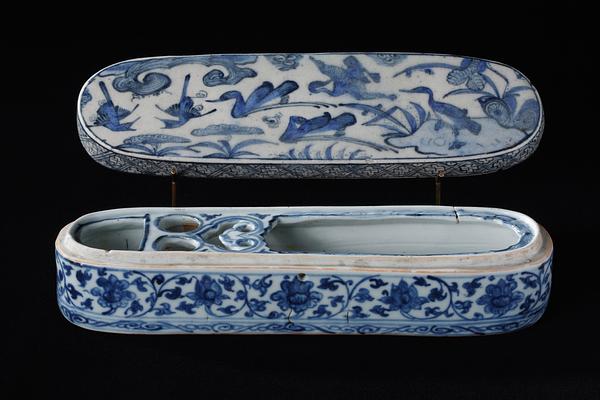Pen case, blue and white porcelain and fritware
Case: China; c. 1500. Lid: Iran; c. 1600
H: 7; W: 7.7; L: 28 cm
This pen case is a model example of the exchange of artistic ideas and influences between the Far and Middle East. Blue underglaze painting was originally a Persian invention that was adopted in the 14th century by the Chinese, who then dominated the field entirely with their blue and white porcelain.
The pen case’s shape is Islamic, modeled on metal cases, which the Chinese copied in porcelain for export to the Middle East. The base was made in China in around 1500 in the style of the day. The lid was broken in Iran, where it was replaced about a century later with a fritware lid copied in the Wan-Li style that prevailed at the time.
Inv. no. 7/1991
Published in:
Sotheby’s, London, 25/4-1991, lot 946;
Kjeld von Folsach, Torben Lundbæk and Peder Mortensen (eds.): Sultan, Shah and Great Mughal: the history and culture of the Islamic world, The National Museum, Copenhagen 1996, cat.no. 298;
Kjeld von Folsach: Art from the World of Islam in The David Collection, Copenhagen 2001, cat.no. 241;
Yuka Kadoi: The Blue road: mastercrafts from Persia, Liang Yi Museum, Hong Kong [2018], cat.no. C13, p. 68;
Eiren L. Shea: “The Mongol cultural legacy in East and Central Asia: the early Ming and Timurid courts” in Ming studies, 2018, 78, fig. 10, pp. 47-48;
